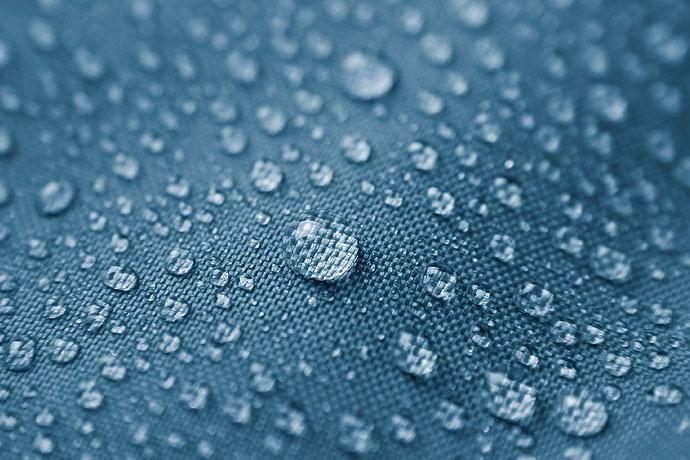IMARC Group’s “Water-Repellent Textile Manufacturing Plant Project Report 2024: Industry Trends, Plant Setup, Machinery, Raw Materials, Investment Opportunities, Cost and Revenue” report provides a comprehensive guide on how to successfully set up a water-repellent textile manufacturing plant. The report offers clarifications on various aspects, such as unit operations, raw material requirements, utility supply, infrastructural needs, machinery models, labour necessities, transportation timelines, packaging costs, etc.
In addition to the operational aspects, the report also provides in-depth insights into water-repellent textile manufacturing process, project economics, encompassing vital aspects such as capital investments, project funding, operating expenses, income and expenditure projections, fixed and variable costs, direct and indirect expenses, expected ROI, net present value (NPV), profit and loss account, and thorough financial analysis, among other crucial metrics. With this comprehensive roadmap, entrepreneurs and stakeholders can make informed decisions and venture into a successful water-repellent textile manufacturing unit.
Request a Sample Report: https://www.imarcgroup.com/water-repellent-textile-manufacturing-plant-project-report/requestsample
What is Water-Repellent Textile?
Water-repellent textiles are specially engineered fabrics designed to repel water, keeping the surface dry while allowing the material to remain breathable. These textiles are typically treated with water-resistant coatings, such as Durable Water Repellent (DWR), or manufactured using tightly woven synthetic fibers, making them ideal for outdoor applications. Water-repellent textiles are widely used in rainwear, outdoor gear, umbrellas, and upholstery, providing reliable protection against moisture and light rain. Unlike waterproof materials, which are completely impervious to water, water-repellent textiles offer a balance of comfort and functionality, making them a popular choice for activewear and outdoor clothing.
Market Trend and Drivers of Water-Repellent Textile:
The global market for water-repellent textile is primarily driven by the increasing popularity of outdoor activities and the need for versatile clothing that performs in various weather conditions. As consumers seek practical and durable clothing options for hiking, sports, and travel, the market for water-repellent textiles continues to expand. Additionally, advancements in fabric technology have led to environmentally friendly water-repellent treatments that avoid harmful chemicals, aligning with the emerging trend toward sustainable, eco-conscious materials. The home furnishing industry is also embracing water-repellent textiles for items like cushions and patio furniture, catering to consumers seeking long-lasting, low-maintenance solutions. In the future, the market for water-repellent textile is expected to grow as innovations enhance both performance and environmental sustainability.
Key Aspects to Setup a Water-Repellent Textile Plant:
- Location to Setup Plant
- Market Research
- Plant Layout
- Construction and Infrastructure
- Equipment/Machinery Procurement
- Documentation and Licenses
- Cost Analysis
Requirements to Setup a Facility:
- Funds
- Machinery
- Lands
Types of Costs to Setting up a Water-Repellent Textile Factory:
- Land, Location and Site Development Cost
- Plant Layout Cost
- Machinery Requirements and Costs
- Raw Material Requirements and Costs
- Packaging Requirements and Costs
- Transportation Requirements and Costs
- Utility Requirements and Costs
- Human Resource Requirements and Costs
Project Economics:
- Capital Investments
- Operating Costs
- Expenditure Projections
- Revenue Projections
- Taxation and Depreciation
- Profit Projections
- Financial Analysis
Key Questions Answered in the Report:
- How has the water-repellent textile market performed so far and how will it perform in the coming years?
- What is the market segmentation of the global water-repellent textile market?
- What is the regional breakup of the global water-repellent textile market?
- What are the price trends of various feedstocks in the water-repellent textile industry?
- What is the structure of the water-repellent textile industry and who are the key players?
- What are the various unit operations involved in a water-repellent textile manufacturing plant?
- What is the total size of land required for setting up a water-repellent textile manufacturing plant?
- What is the layout of a water-repellent textile manufacturing plant?
- What are the machinery requirements for setting up a water-repellent textile manufacturing plant?
- What are the raw material requirements for setting up a water-repellent textile manufacturing plant?
- And more…
How IMARC Can Help?
IMARC Group is a global management consulting firm that helps the world’s most ambitious changemakers to create a lasting impact. The company provide a comprehensive suite of market entry and expansion services. IMARC offerings include thorough market assessment, feasibility studies, company incorporation assistance, factory setup support, regulatory approvals and licensing navigation, branding, marketing and sales strategies, competitive landscape and benchmarking analyses, pricing and cost research, and procurement research.
Services:
- Plant Setup
- Factoring Auditing
- Regulatory Approvals, and Licensing
- Company Incorporation
- Incubation Services
- Recruitment Services
- Marketing and Sales
Contact Us:
IMARC Group
134 N 4th St. Brooklyn, NY 11249, USA
Email: sales@imarcgroup.com
Tel No:(D) +91 120 433 0800
United States: +1-631-791-1145

